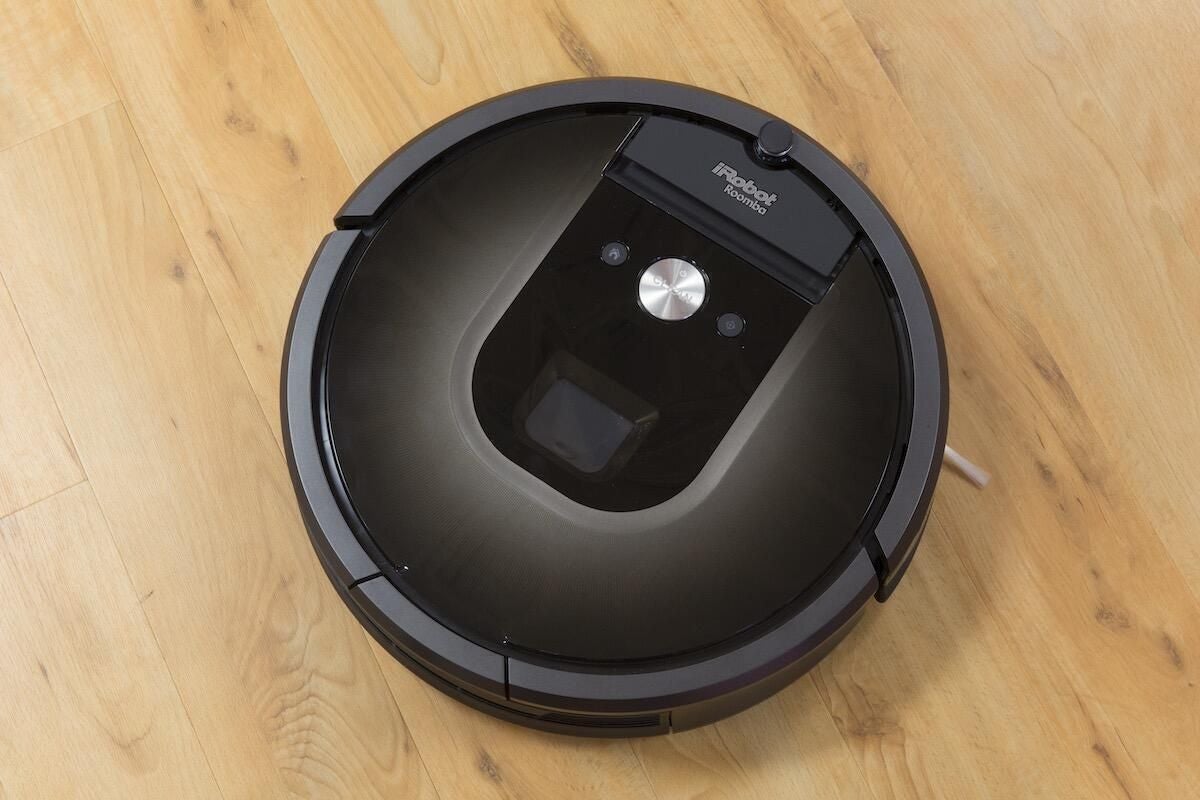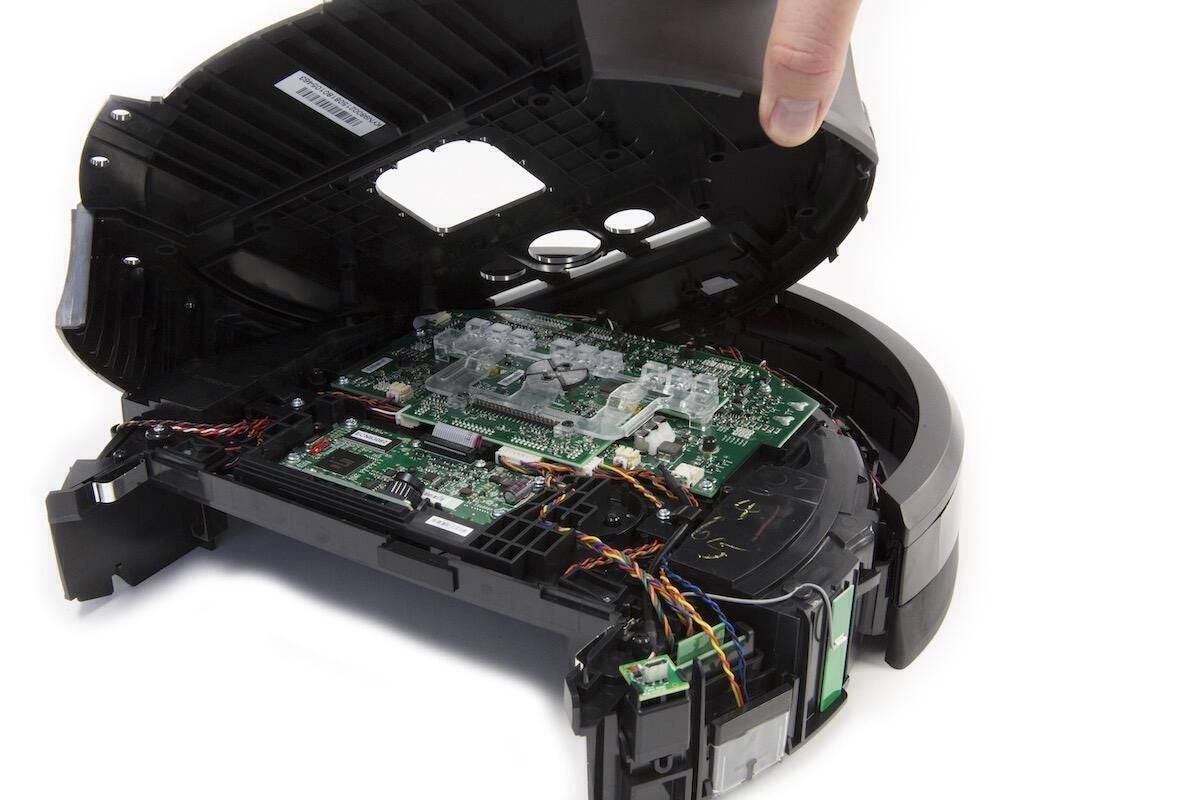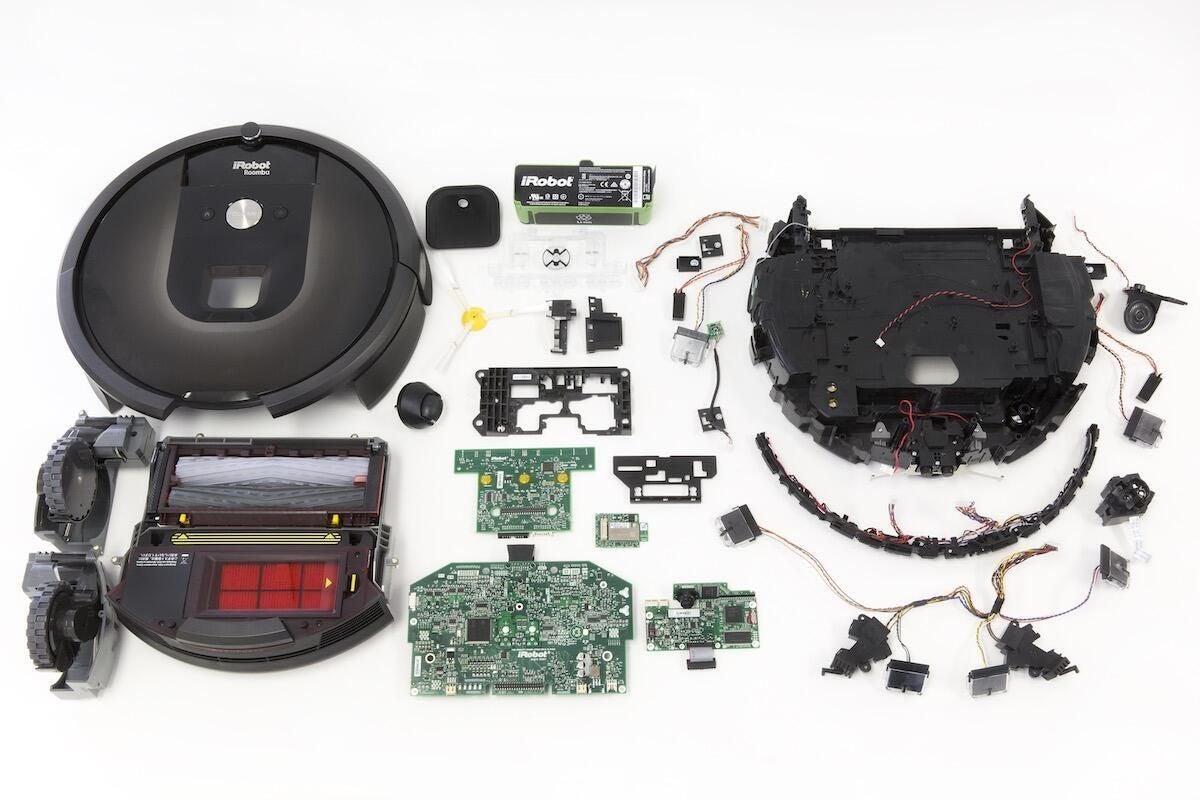
Image: CBS Interactive/Bill Detwiler
Over the past decade, robotic vacuums have grown up. They’ve graduated from novelty household robots to efficient appliances that suck up dirt while autonomously navigating our homes.
iRobot is the leader in this robo-cleaning revolution. The iRobot Roomba 980, an expensive model released in late 2015, sweeps in straight lines while navigating your home’s entire floor and adjusting its suction power based on the surface it’s cleaning — all manageable from your smartphone via a mobile app. To find out how the $900, cloud-connected Roomba 980 does all this, I broke out my tools and cracked it open.
Editor’s note: This story originally ran in the Spring 2016 issue of CNET Magazine. We’re republishing it on TechRepublic to coincide with our cover story, “How iRobot used data science, cloud, and DevOps to design its next-gen smart home robots.”
Cracking open the iRobot Roomba 980
I began my teardown by removing the dust bin assembly (which includes the suction motor) and battery. The removable side brush came off next, followed by the bottom cover.
Removing the cover gave me access to most of the vacuum’s mechanical components, which are a series of self-contained compartments. I removed the cleaning head module first, then the left and right wheel modules. Finally, I removed the front caster wheel.
Removing the Roomba’s moving parts was easy. Once I reached the Roomba’s sensors and circuit boards, things got trickier. I used a flat, plastic tool called a spudger to gently pry off the two plastic trim pieces that run along the shell’s upper, rear edge. Hidden under one of the trim pieces is a Micro USB port used at the factory or by service center personnel to perform diagnostic tests or manually upgrade the software. Using the same tool, I then removed the glossy faceplate and then the rubber collar that surrounds the new, forward-looking iAdapt camera — a low-resolution camera that helps the robot navigate.

Image: CBS Interactive/Bill Detwiler
Next, I detached — but couldn’t completely separate — the front bumper from the shell. A thin wire connects the bumper’s sensors with the circuit boards inside, so I had to first open the plastic shell by removing the Roomba’s handle and a dozen screws. That gave me my first look at the bot’s brain.
Unlike your run-of-the-mill vacuum, the Roomba 980 is packed with circuit boards. The largest, called the Mobility Board, contains one of the vacuum’s microcontrollers. Stacked on top of the Mobility Board is the t-shaped, user interface (UI) board, which houses the control button contacts, indicator LEDs and connectors for the various sensors. Mounted behind the Mobility and UI boards are the Camera and Nav (navigation) boards, which are soldered together. Lastly, there’s a small board containing the Micro USB port and a wireless antenna board mounted to the left, rear side of the shell.
After disconnecting a tangle of wires and removing many more screws, I removed all the circuit boards. Along the way, I also removed the front bumper sensors, cliff sensors (which detect when the floor is about to drop), dust bin sensors (which determine when the bin is full), floor-tracking sensor, and a speaker. After about 30 minutes, the Roomba teardown was complete.

Image: CBS Interactive/Bill Detwiler
What the iRobot Roomba 980 teardown tells us
User-repairable/modular design: Unlike many of the gadgets I’ve cracked open, the Roomba 980 (like most Roomba models) is built for disassembly and repair. iRobot cleverly contains the mechanical components that endure the most wear (wheels, side brush, cleaning head, and so on) in so-called customer replaceable modules. That way, iRobot can send a new part and walk you through the replacement process if one module fails.
You won’t need a box of special tools to make the repairs, either. I completed my teardown using Torx T6, Phillips #1 and Phillips #2 screwdrivers, a plastic spudger for removing the trim pieces, and a flathead screwdriver for prying loose the more stubborn internal parts.
Sensors, sensors, sensors: iRobot doesn’t publicize the exact number of sensors in the Roomba, but a quick count during the teardown puts the total north of 15, including wheel odometry sensors, cliff sensors, bumper sensors, optical and acoustic dirt sensors, dust bin sensors, and a new floor-tracking sensor plus a low-resolution camera, which is used for navigation.

Image: CBS Interactive/Bill Detwiler
Tons of new tech: The 980 uses iRobot’s new iAdapt 2.0 navigation system. The system combines the tried-and-true navigation algorithms — the rules that tell the robot how to move — used by previous Roombas with brand-new algorithms based on a method of robot navigation called visual simultaneous localization and mapping (VSLAM). Using iAdapt 2.0, the Roomba 980 builds a map of the area as it cleans. To create the map, it uses the new floor-tracking sensor to measure the distance and direction it travels (much like an optical computer mouse measures its movement across your desk). The Roomba then combines the floor sensor information with data from its wheel odometry sensors and bump sensors to complete the map. Lastly, it adds details to the map by using data from other sensors, such as the cliff sensors (to detect dropoffs) and IR sensors (to detect the docking station or virtual walls). The Roomba then uses the camera to create waypoints (often corresponding to the edges of objects in the room) that the robot uses to localize its position on the map.
The new system allows the Roomba 980 to clean an entire floor of your home instead of just single rooms like the older models did. The robot creates a new map each time it begins a cleaning cycle, just in case you’ve moved the kitchen chairs or bought a new couch. If the Roomba must return to the base station and recharge during the cycle, it will hold the map in memory for up to 90 minutes and resume cleaning where it left off.
To make the iAdapt 2.0 system work, iRobot engineers had to significantly upgrade the Roomba 980’s hardware and software. Compared with the Roomba 880, the 980 has 100 times the lines of code and more processing power, plus a new floor-tracking sensor that measures the distance and direction it’s traveled while keeping the robot in a straight line. The new low-resolution camera helps the Roomba determine its position on the map, and the 980’s Wi-Fi lets it connect to the cloud and allows owners to manage their Roomba with the iRobot Home app (available on Android and iOS).

Image: CBS Interactive/Bill Detwiler
Evolutionary leap for Roomba
The 980 is a huge leap forward in the Roomba’s evolution, and it’s no wonder iRobot made these changes now. There’s a lot more competition in the robotic vacuum market than there was 10 years ago. We praised the new tech in our CNET review, but found in our testing that the 980’s performance didn’t match its sweepingly high price.
The Neato Botvac Connected offers similar features as the Roomba 980, costs $200 less, and earned CNET’s Editors’ Choice Award. The Samsung PowerBot VR9000 also costs $200 less than the 980, but it lacks Wi-Fi and didn’t clean elegantly in our CNET testing.
Robot vacuums may not be essential home appliances, but they’re definitely more than just toys for techies. The Roomba 980 is an excellent example of how much these bots have evolved in the past decade and an indicator of how the technology will advance in the next.
